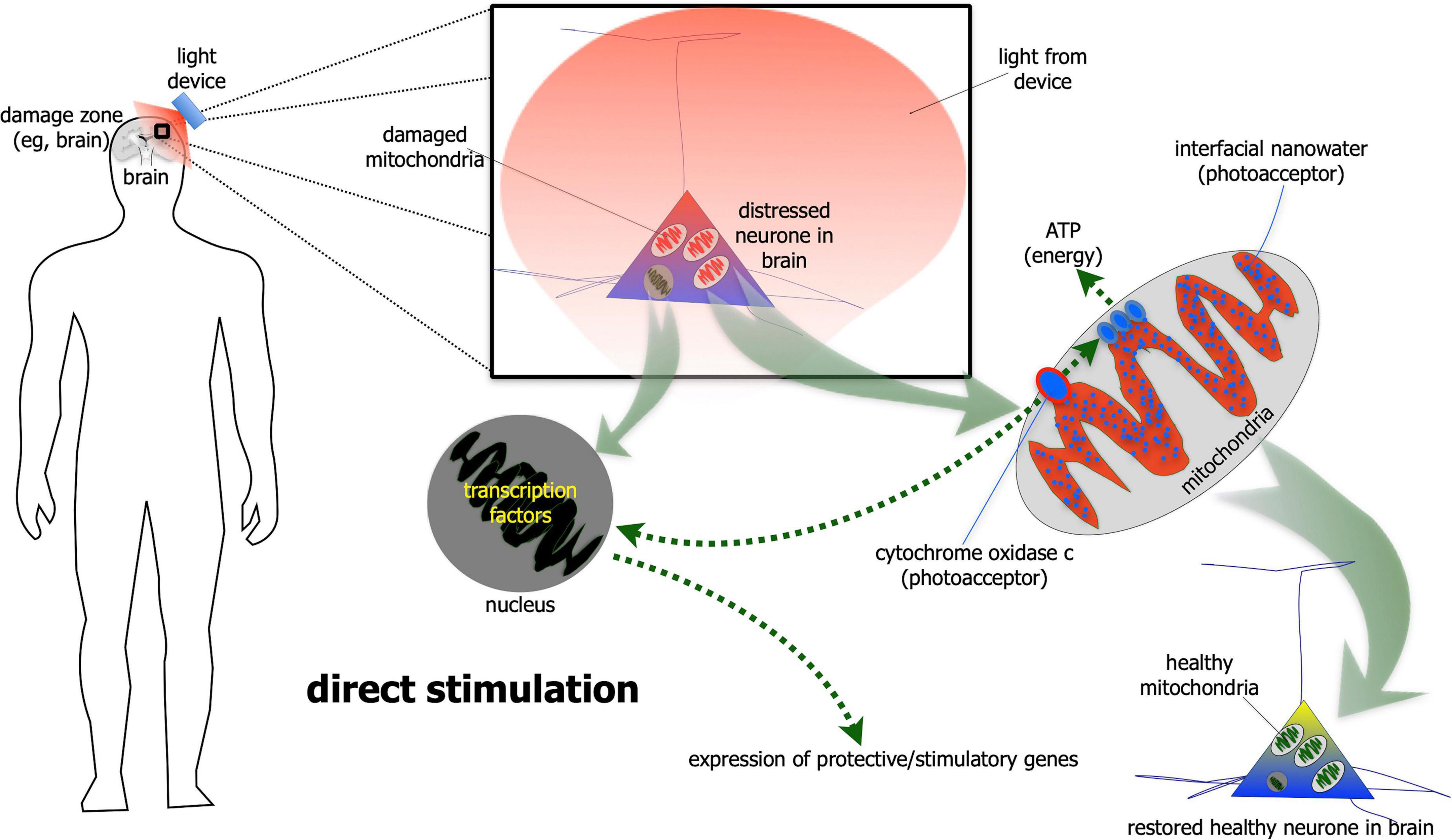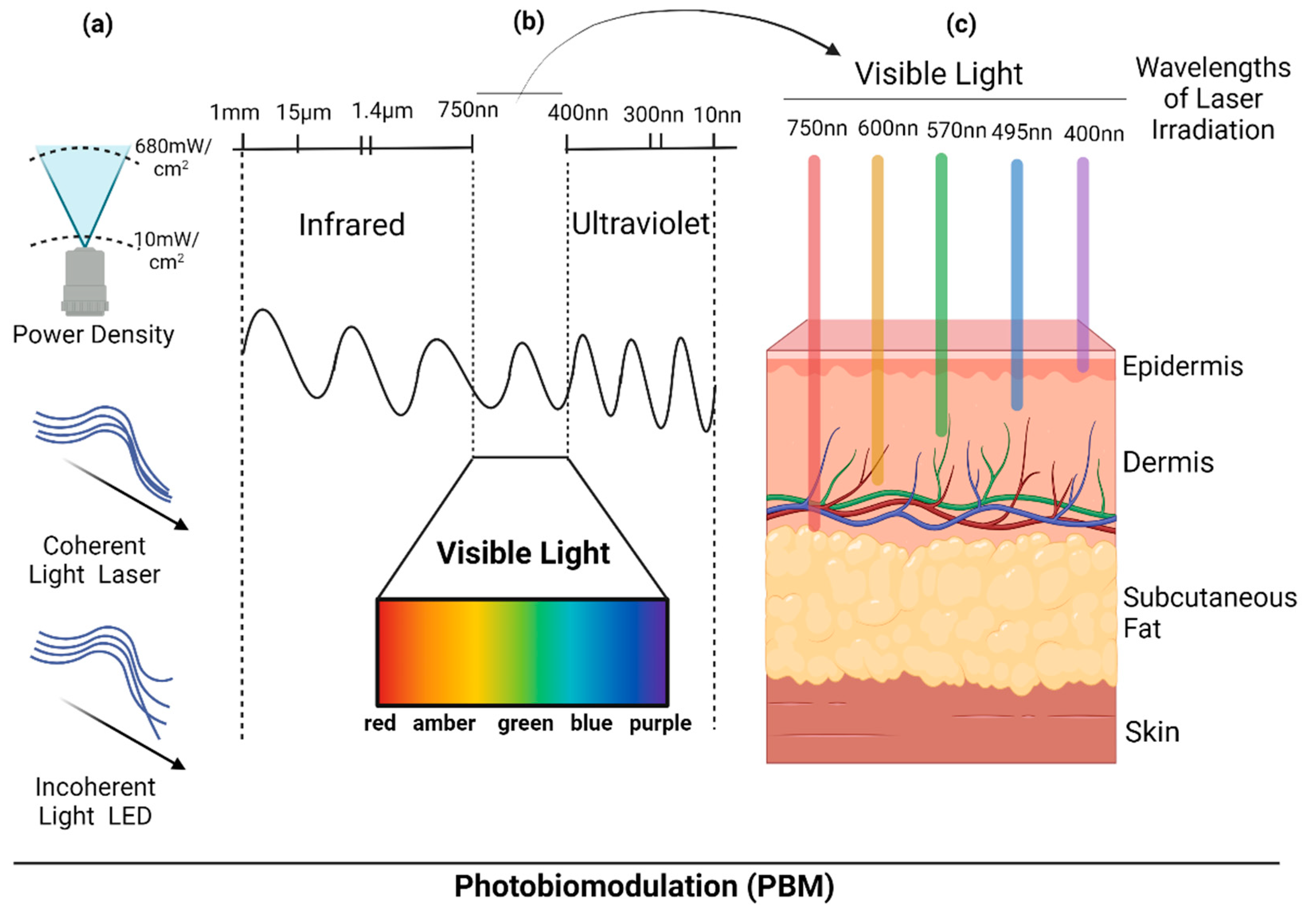How Photobiomodulation can Save You Time, Stress, and Money.
Wiki Article
The 10-Second Trick For Photobiomodulation
Table of ContentsAn Unbiased View of PhotobiomodulationThe Best Strategy To Use For PhotobiomodulationNot known Details About Photobiomodulation Facts About Photobiomodulation Revealed
Laser therapy is a medical treatment that utilizes focused light to boost a procedure called. Throughout PBM, photons go into the tissue and connect with the cytochrome c complex within mitochondria. This communication sets off a biological cascade of events that results in a boost in mobile metabolic process, which can along with speed up the healing process.There is consensus that the application of a restorative dosage of light to damaged or inefficient cells results in a cellular action mediated by mitochondrial systems. Photobiomodulation. Studies have revealed that these modifications can affect pain and swelling, as well as, tissue fixing
Changes in ATP, responsive oxygen species and nitric oxide adhere to light absorption by Cc, O. These effects are redox state and dose dependent.

What Does Photobiomodulation Mean?
PBM devices have actually been removed for advertising and marketing by FDA through the Premarket Notification/510( k) procedure as adjunctive gadgets for the momentary alleviation of pain. These clearances were based on the presentation of professional data to sustain such claims (Photobiomodulation). In this therapy, a light source is placed near or in contact with the skin, permitting the light power (photons) to permeate tissue where it interacts with chromophores found in cells leading to photophysical and photochemical adjustments that result in alterations at the molecular, mobile and cells degrees of the bodyInterestingly, current study suggests that light can enhance efficiency in regular cells and cells. The possible applications of PBMT are many and are being explored experimentally at the basic science, pre-clinical and scientific degree. The current scientific uses are for the alleviation of pain and inflammation and the therapy of sports injuries.

The therapy parameters and number of sessions needed for PBMT depend on location and cause. PBMT generally needs even more than one treatment for ideal discomfort alleviation. It might take numerous therapies for the results to end up being evident. reports that it can take anywhere from eight to 30 sessions for a therapy to be completely reliable, and some clients locate it essential to go through therapy two to four times each week.
Photobiomodulation - Truths
Treatment parameters for PBMT were initially established making use of cells artificial insemination and in tiny animal versions. These treatment parameters generally had a low irradiance and fluence and worked well for cutaneous applications. When medical professionals began to utilize PBMT to deal with structures that were located much deeper in the body, they used webpage these parameters with negative results.
We currently comprehend that these unfavorable research studies resulted from incorrect device and therapy criteria for transcutaneous therapy of deeper frameworks. Current advances in laser therapy devices and more research study into the proper dosages have significantly boosted the results of PBMT. For dealing with deep tissues, the wavelength of light made use of determines the deepness of penetration into a cells.
As a result, it is very important that a medical professional uses the appropriate wavelength of light and criteria to treat a condition. One wavelength and one set of treatment specifications will not be effective for all conditions. Unfavorable adverse effects have actually not been reported from making use of PBMT (Photobiomodulation). Upgraded June 27, 2016Juanita j
Light therapy is a non-invasive treatment that works by enhancing the capability of the cell to produce energy (ATP) to recover the area being treated. Because of this, it can reduce inflammation, swelling, and pain in the area. Research study around is broadening, with more extensive research documents linked listed below for those that wish to find out more.
4 Simple Techniques For Photobiomodulation
In the first experiment, Dr. Endre Mester, used shaved rats and observing just how the laser affected their capability to grow hair compared to the group that was not receiving LLLT. He discovered that the team of mice obtaining LLLT had the ability to grow their hair back quicker than the team of mice that really did not get LLLT (Hoon C, et al; 2012).This treatment is called this method to separate the distinction between the lasers some careers make use of to reduce (eg. Low-level light therapy is painless, non-invasive therapy.
LLLT has a biphasic reaction, meaning that reduced dosages are typically seen to be a lot more advantageous than higher dosages. That being stated, dosages higher or my link less than the optimal dosage doesn't influence (Hoon C, et alia; 2012). Therefore, it can be challenging to have researches on LLLT with many criteria.
Some business combined the 2 (LED and laser) to give an extra all-around treatment since lasers can permeate deeper than LED and infrared light (Norman Doidge, The Brain's Means of Recovery, 2015). Throughout therapy, the area that is being dealt with is subjected to LED this contact form light from a Biography, Flex Laser, which goes to 660 nm wavelength, followed by infrared light at 830-840 nm wavelength.
Report this wiki page